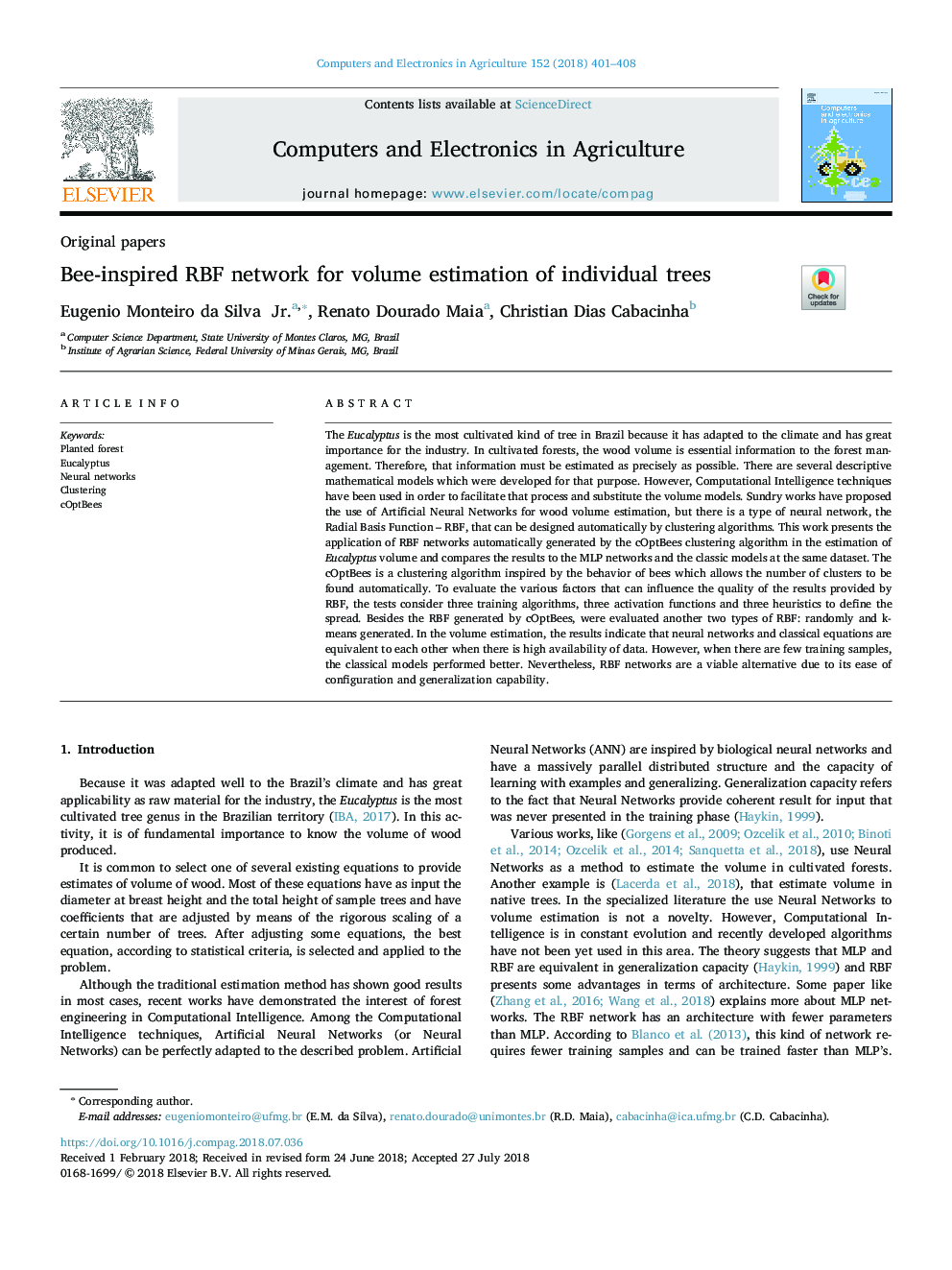| Article ID | Journal | Published Year | Pages | File Type |
|---|---|---|---|---|
| 6539315 | Computers and Electronics in Agriculture | 2018 | 8 Pages |
Abstract
The Eucalyptus is the most cultivated kind of tree in Brazil because it has adapted to the climate and has great importance for the industry. In cultivated forests, the wood volume is essential information to the forest management. Therefore, that information must be estimated as precisely as possible. There are several descriptive mathematical models which were developed for that purpose. However, Computational Intelligence techniques have been used in order to facilitate that process and substitute the volume models. Sundry works have proposed the use of Artificial Neural Networks for wood volume estimation, but there is a type of neural network, the Radial Basis Function - RBF, that can be designed automatically by clustering algorithms. This work presents the application of RBF networks automatically generated by the cOptBees clustering algorithm in the estimation of Eucalyptus volume and compares the results to the MLP networks and the classic models at the same dataset. The cOptBees is a clustering algorithm inspired by the behavior of bees which allows the number of clusters to be found automatically. To evaluate the various factors that can influence the quality of the results provided by RBF, the tests consider three training algorithms, three activation functions and three heuristics to define the spread. Besides the RBF generated by cOptBees, were evaluated another two types of RBF: randomly and k-means generated. In the volume estimation, the results indicate that neural networks and classical equations are equivalent to each other when there is high availability of data. However, when there are few training samples, the classical models performed better. Nevertheless, RBF networks are a viable alternative due to its ease of configuration and generalization capability.
Related Topics
Physical Sciences and Engineering
Computer Science
Computer Science Applications
Authors
Eugenio Monteiro Jr., Renato Dourado Maia, Christian Dias Cabacinha,
